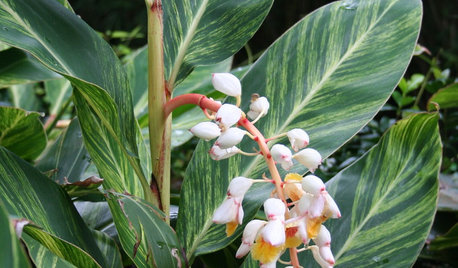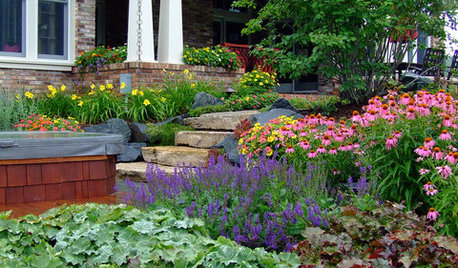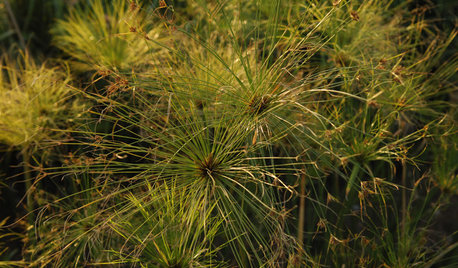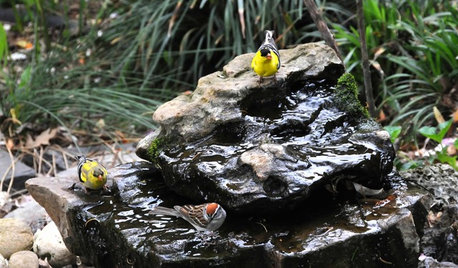New to ponds and bogs
heartwoman
20 years ago
Related Stories

GARDENING AND LANDSCAPINGHow to Make a Pond
You can make an outdoor fish paradise of your own, for less than you might think. But you'll need this expert design wisdom
Full Story
GARDENING GUIDES7 Tropical Bulbs for a Summer Garden That Wows
Try these stunners in summer's powerful heat for garden thrills with an exotic flair
Full Story
INSIDE HOUZZInside Houzz: New Data Offer Insights on Landscaping Trends
Homeowners are looking to manage water and add more enjoyment to their landscapes, according to a new Houzz survey
Full Story
GARDENING GUIDESGreat Design Plant: Cephalanthus Occidentalis
Buttonbush is an adaptable woody shrub with delightful pincushion flowers
Full Story
GARDENING GUIDESGreat Design Plant: Papyrus
Out of Africa and into your garden, gently swaying papyrus adds an exotic touch to water features and riverbeds
Full Story0

LANDSCAPE DESIGNNatural Swimming Pools: More Beauty, No Chemicals
Keep your skin and the environment healthy with a pool that cleans itself, naturally
Full Story
OUTDOOR PROJECTSBring In the Birds With a Homemade Bubble Rock
An avian expert from Southern Indiana shows how to make a burbling fountain that migrating birds will love
Full Story
LANDSCAPE DESIGNHow to Move Water Through Your Landscape
Swales, underground pipes or a mix of both: There’s more than one way to distribute water in the garden
Full Story
FALL GARDENINGHouzz Call: Show Us Your Fall Color!
Post pictures of your fall landscape — plants, leaves, wildlife — in the Comments section. Your photo could appear in an upcoming article
Full Story
FUN HOUZZHouzz Call: Tell Us About Your Dream House
Let your home fantasy loose — the sky's the limit, and we want to hear all about it
Full StorySponsored






vundril
whtros
Related Professionals
Wrentham Landscape Architects & Landscape Designers · Kenmore Landscape Architects & Landscape Designers · Southfield Landscape Architects & Landscape Designers · Aurora Landscape Contractors · Cincinnati Landscape Contractors · Dinuba Landscape Contractors · Pueblo West Landscape Contractors · New Orleans Roofing & Gutters · Sand Springs Roofing & Gutters · Roswell Roofing & Gutters · Orlando Roofing & Gutters · Wilton Manors Roofing & Gutters · Farmington Siding & Exteriors · Philadelphia Siding & Exteriors · West Bloomfield Township Siding & ExteriorsheartwomanOriginal Author
heartwomanOriginal Author
joanr
Ann_in_Houston
heartwomanOriginal Author
phoenix_pa
heartwomanOriginal Author
dendy
kahuna1
Aruba_1st
heartwomanOriginal Author